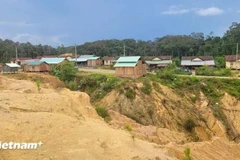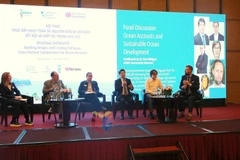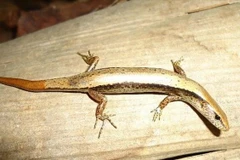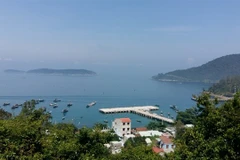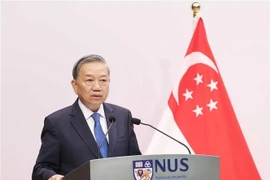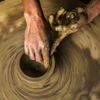Under a programme to reduce environmental pollution in the 2016-20 period, HCMCity aims to reduce surface water pollution by 90 per cent, according tothe department.
In recent years, the city has dredged rivers and canals and hasurged residents not to discharge waste into canals.
A recent water test at 21 locations throughout the Sai Gon – Dong Nai riversystem showed that all water samples met the standards set by thedepartment. Sampled water at areas such as the Nhieu Loc – Thi Nghe canalalso indicated improved quality.
However, canals and rivers that lie between various provinces and regions stillshow signs of heavy microbiological pollution, oxygen depletion and otherproblems.
In addition, waterways throughout the city are suffering from thousands oftonnes of waste and large amounts of untreated wastewater.
Though the city has heavily invested in canal protection every year, waterquality is not expected to improve until public awareness of environmentalprotection improves, experts have said.
Manufacturers in the city have implemented environmental treatmentsolutions, but they are mostly small-scale and ineffective, according to thedepartment.
The department said it would work with districts where rivers and canalsare located to encourage citizens not to throw litter or sewage into thecanals, especially the Nhieu Loc-Thi Nghe canal.
Factories and industrial parks that discharge over 1,000 cubic metres ofwastewater a day must set up automatic measuring stations that directly link tothe department, according to the city People’s Committee.
Companies should also be encouraged to use advanced equipment and technologiesto minimise waste. The water quality monitoring network should beexpanded and an environmental database established, it said.
Local authorities will be responsible for monitoring wastewater treatmentin manufacturing facilities and requiring companies that do nothave proper treatment solutions to invest in standard-quality systems.
To reduce the amount of toxins in the canal, the city will increase sewagepumping to at least 64,000 cubic metres per hour after heavy rains.
The flood-tide control sewers on the canal will also be monitored closely toregulate water levels in the rainy season and protect water quality.
The city plans to continue to strictly regulate all wastewater treatmentsystems in industrial parks, export processing zones, high-tech parks andindustrial clusters.
It will also set up automatic wastewater measurement stations directly linkedto the department.
HCM City targets collecting and treating all industrial and medicalliquid wastes and 90 per cent of industrial fumes by the end of this year. Italso plans to reduce surface water pollution by 90 percent and air pollution by70 percent in comparison with 2011.
The city has in recent years spent trillions of Vietnamese dongto clean up its highly polluted canal network. Most canals arecovered in rubbish and their water is often black and foul, making them looklike sewers rather than canals.
According to the department, pollution levels in many canals is farabove permitted levels.
The Nhieu Loc-Thi Nghe Canal, which runs through District 1, District 3, and PhuNhuan, Binh Thanh, and Tan Binh districts with more than 1.2 million residentsliving along it, was once seriously contaminated and considered a “dead canal”back in the 1950s.
The canal was revitalised following a World Bank-funded clean-up project,the first phase of which ended in 2012./.





